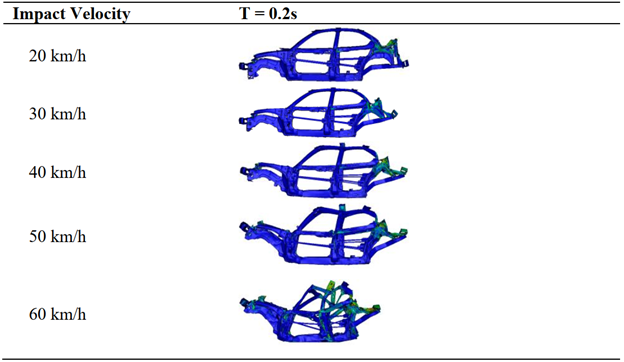Road safety remains a growing challenge in Southeast Asia, where high traffic density and mixed vehicle types increase the risk of severe multi-vehicle collisions. Among the most dangerous scenarios are chain crashes at intersections, where a heavy-duty truck loses braking control and collides with stationary vehicles waiting at traffic lights.
This study, conducted by Van Lang University (Vietnam), Binh Duong Economics and Technology University (BETU), and Universiti Teknologi Malaysia (UTM), investigates the crashworthiness of sedan passenger vehicles under such multi-vehicle impacts, focusing on both front and rear-end deformation.
Objective and Motivation
Conventional safety evaluations rarely address collisions involving both ends of a vehicle simultaneously — a situation commonly seen in real-world urban crashes. Such “sandwich collisions” between two heavy trucks can cause catastrophic structural failure in sedans, resulting in extreme intrusion into the passenger cabin and potentially fatal injuries.
To address this gap, the research aims to analyze the energy transfer mechanisms and structural deformation of a sedan under different collision velocities, using advanced Finite Element Method (FEM) simulations.
Simulation Methodology
The research employed LS-DYNA simulation with detailed finite element models (FEM) of a Dodge Neon sedan and two heavy-duty container trucks, based on validated data from the National Crash Analysis Center (NCAC, USA).
The collision sequence was simulated for five impact speeds (20, 30, 40, 50, and 60 km/h), replicating real urban traffic conditions. Key parameters analyzed included:
- Kinetic and internal energy evolution
- Structural displacement
- Passenger compartment intrusion, assessed using IIHS (Insurance Institute for Highway Safety) standards.
 Hình 1: Simulation Results at 0.2 Seconds Post-Collision Across Varying Impact
Hình 1: Simulation Results at 0.2 Seconds Post-Collision Across Varying Impact
Key Research Focus
The study’s uniqueness lies in its dual-impact modeling, where the sedan is compressed between two heavy vehicles — a front truck and a rear truck. This setup allows the researchers to quantify:
- The energy absorption capability of the sedan body.
- The extent of cabin intrusion relative to impact velocity.
- The effectiveness of energy dissipation zones in the front and rear structures.
This simulation-driven approach provides new perspectives for vehicle design optimization, especially for developing countries where heavy trucks and light passenger vehicles frequently share the same traffic environment.